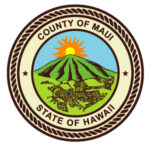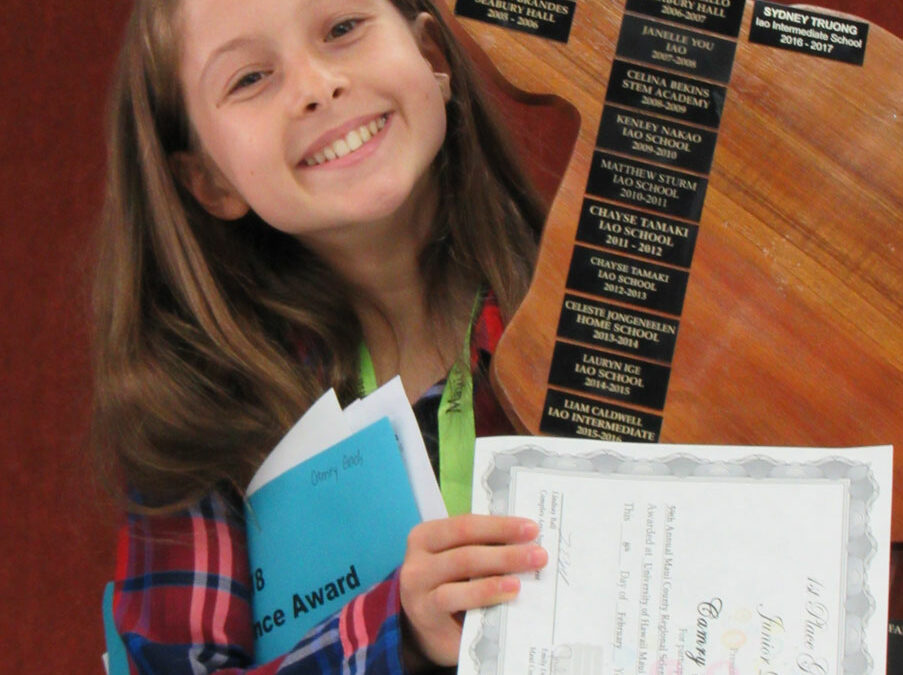
May 2, 2018 | Education, Innovation
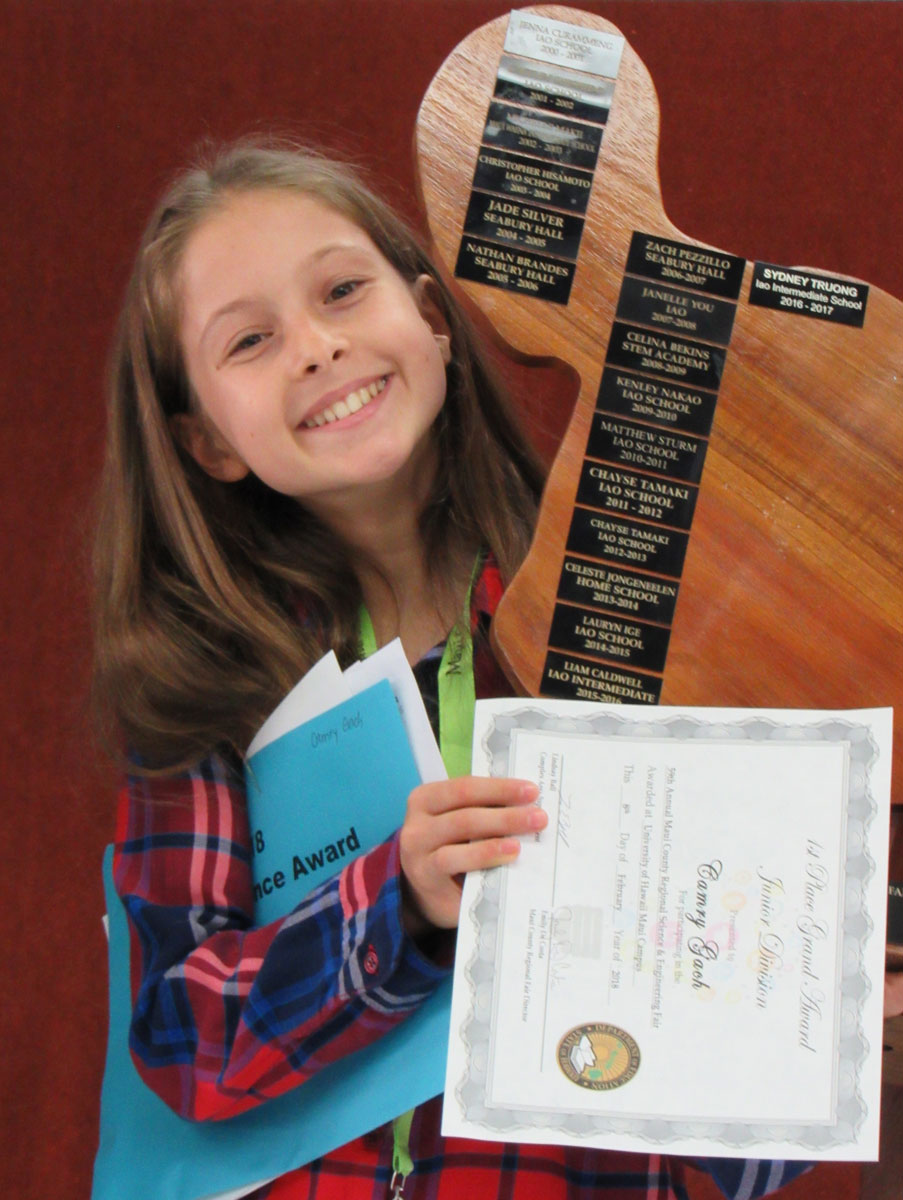
Camry Gach, Seabury Hall 8th grader, is the winner of this year’s 59th Annual Maui County Regional Science & Engineering Fair’s First Place Grand Award – Junior Division; the 2018 Ricoh Sustainable Development Award; the 2018 Broadcom MASTERS; The Best in Energy – Physical Junior Division Award; the Alexander and Baldwin Merit Award – Junior Division; and the Naval Science Award.
“My science fair project, The Effect of Different Lenses and Lights on Solar Power, tested convex, concave, and flat glass at three different heights: 20, 30, and 50 centimeters away from a photovoltaic cell (mini solar panel) to see if they would increase the voltage of the focal point on the cell,” said Gach. “I became interested in this project because I have always been so amazed that energy can be produced from the sun without having to emit a by-product into the air. With such a phenomenal form of sustainable energy, I wanted to contribute to solar panel companies by increasing the voltage that a solar panel produces. I knew that lenses directed light, so I decided to experiment with them to see if that could increase solar voltage. The red light with the convex lens at 30cm from the cell had the highest voltage. The red light mostly had the best results, because it has longer wavelengths than the blue light, which made it travel to the lenses more efficiently.”
Gach’s vision for moving forward with this project is to test a giant convex lens that is bigger than the cell to see if that will increase the output of the whole photovoltaic cell and not just the focal point. “This may increase solar power, because the convex lens will collect light outside the perimeter of the cell and direct that light into the photovoltaic cell,” said Gach, who also would like to continue this experiment by testing with the sun as a light source to represent solar power more realistically. “I feel very excited to continue my project and contribute to solar research.”
I am also interested in testing a Fresnel lens because it uses many lenses and angles to concentrate light.
Camry Gach, Seabury Hall 8th grade
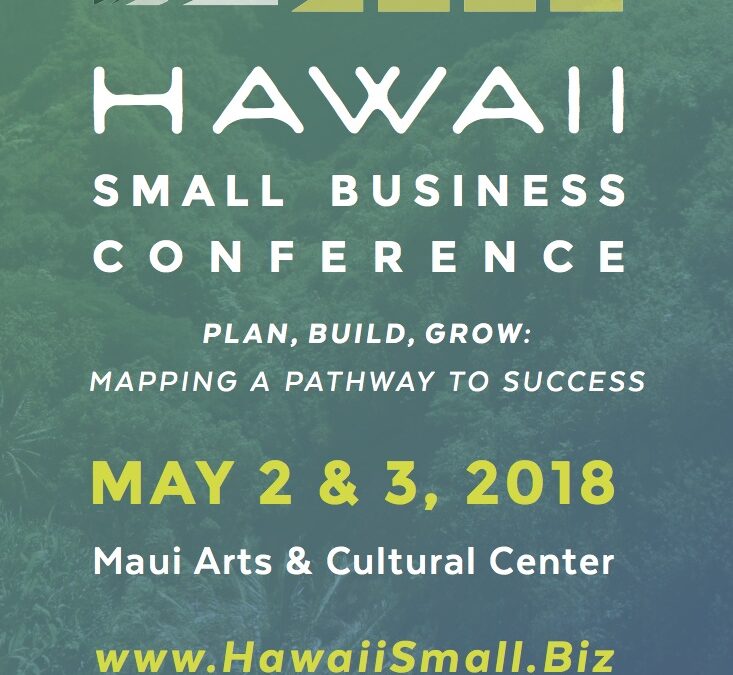
Feb 28, 2018 | Education, Innovation, Small Business
Don’t miss the second annual Hawaii Small Business Conference at the Maui Arts & Cultural Center on May 2 & 3, 2018, presented by the County of Maui Mayor’s Office of Economic Development and Maui Economic Development Board. The theme of this year’s conference is “Plan, Build, Grow: Mapping A Pathway to Success.”
Hear from experts, and successful business owners, on Customer Service, Business Growth and Scaling, Social Media Management, Entrepreneurial Psychology, Innovation, Tax Strategies and more. Network with fellow business and community leaders. Learn more at www.hawaiismall.biz
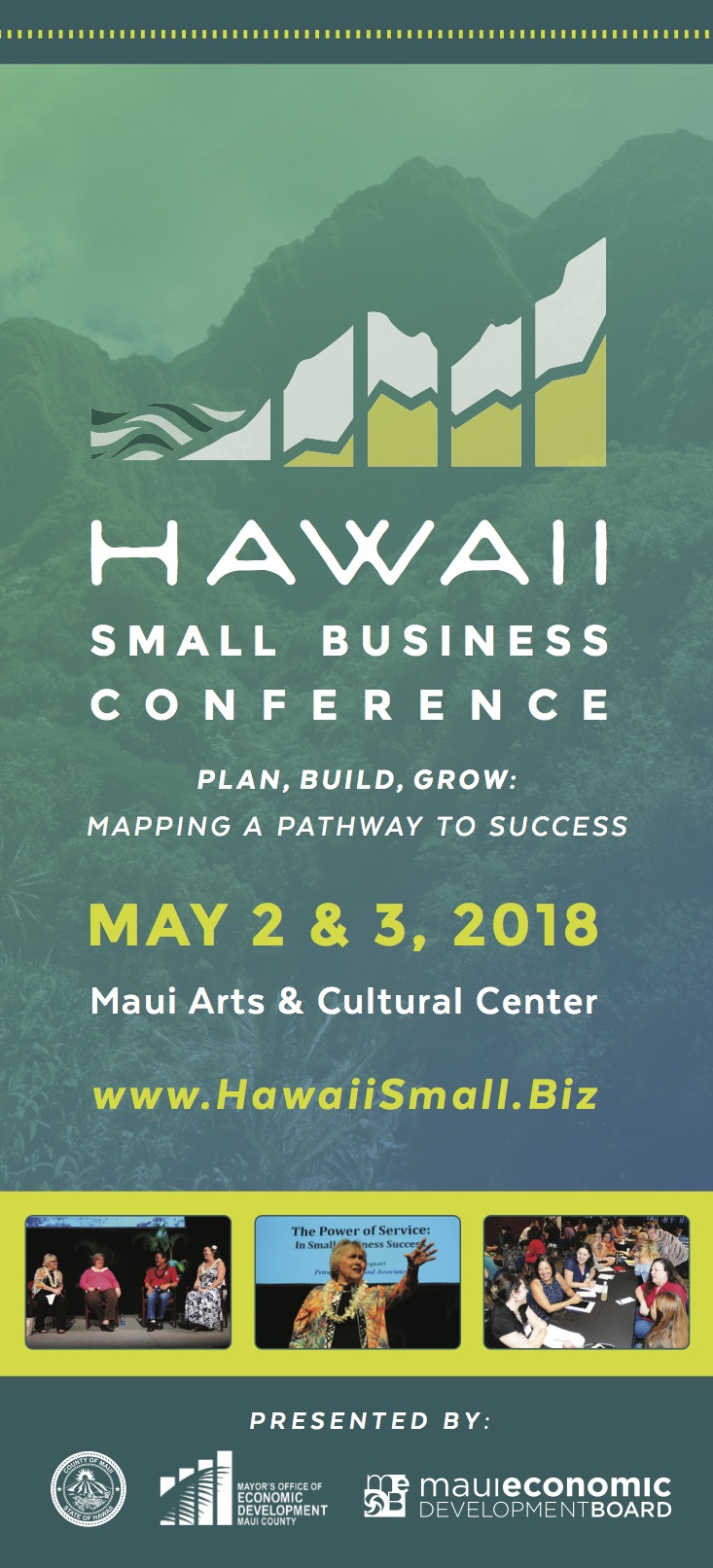
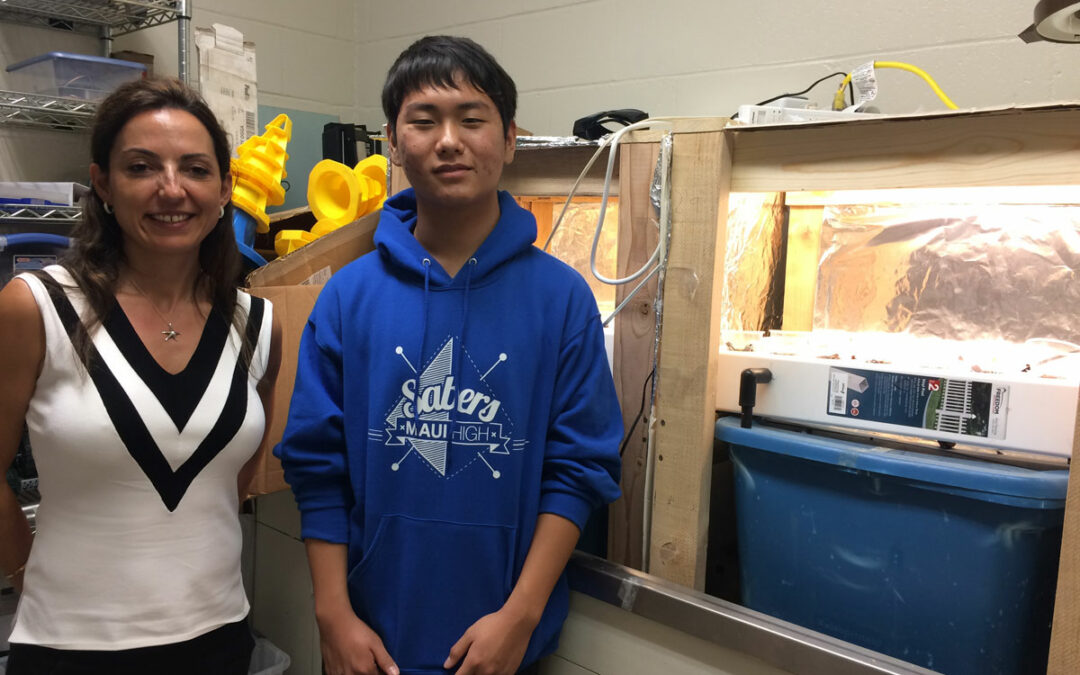
Jan 31, 2018 | Environment, Innovation, Stemworks
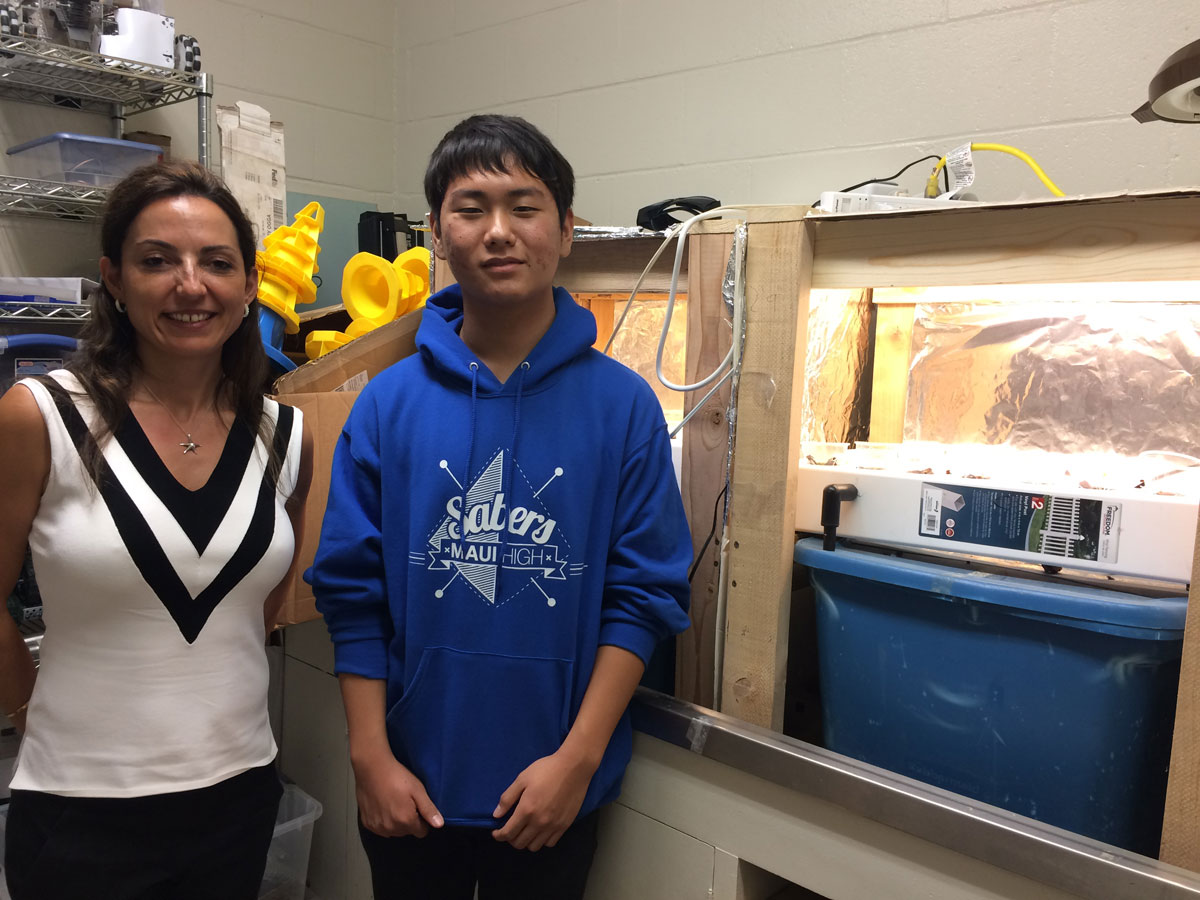
The University of Hawaii (UH) Educational Outreach Team and Maui Economic Development Board have long shared common goals for STEM (science, technology, engineering, and mathematics) education. Recently, UH-Manoa Physics Department hosted a group of three Maui High School students, Mary Chin, OneJae Lee, and Zain Jabber, at a Maui workshop to present their summer research findings on the effect of cosmic rays on Mars colonization. With the help of their project mentors, Dr. Veronica Bindi, UH-Manoa associate physics professor, Dr. J. D. Armstrong, UH Institute for Astronomy (IfA), and their Maui High science teacher, Keith Imada, the students investigated possible correlations between galactic cosmic rays and solar activity to determine the amount of radiation astronauts would encounter enroute to Mars and living there.
“Space radiation represents the major obstacle to manned missions to Mars,” said Bindi, who gave a presentation to Maui High students entitled, ‘When is the best time to go to Mars?’ “Radiation damages the DNA of the astronauts in irreversible ways. We are working with NASA to assess the amount of radiation astronauts would be exposed to, how to mitigate it using special shields, and the viability of food production on Mars.”
Mary Chin’s project was focused on the study of cosmic rays, building a low-cost muon detector and developing the software to operate it. Another student, OneJae Lee, designed and built his own hydroponic system to test the effects of space radiation on food plants. “Although it is difficult to replicate galactic cosmic rays in a laboratory, it is possible to test other high-energy radiation,” Lee explained. “I found many challenges to having the plants survive even with lower-energy ultraviolet-C rays.”
Zain Jabbar researched coronal holes caused by interacting magnetic fields on the sun and whether they are related to sunspot activity. “I looked for a connection to the solar cycle, comparing conditions when the sun is very active and when it is much less active. Greater solar activity can result in electrical grid blackouts around the world.”
I mimicked conditions on Mars using ultraviolet-C rays to study whether the light present on Mars could be used for plant growth without special filters.
OneJae Lee, Maui High School
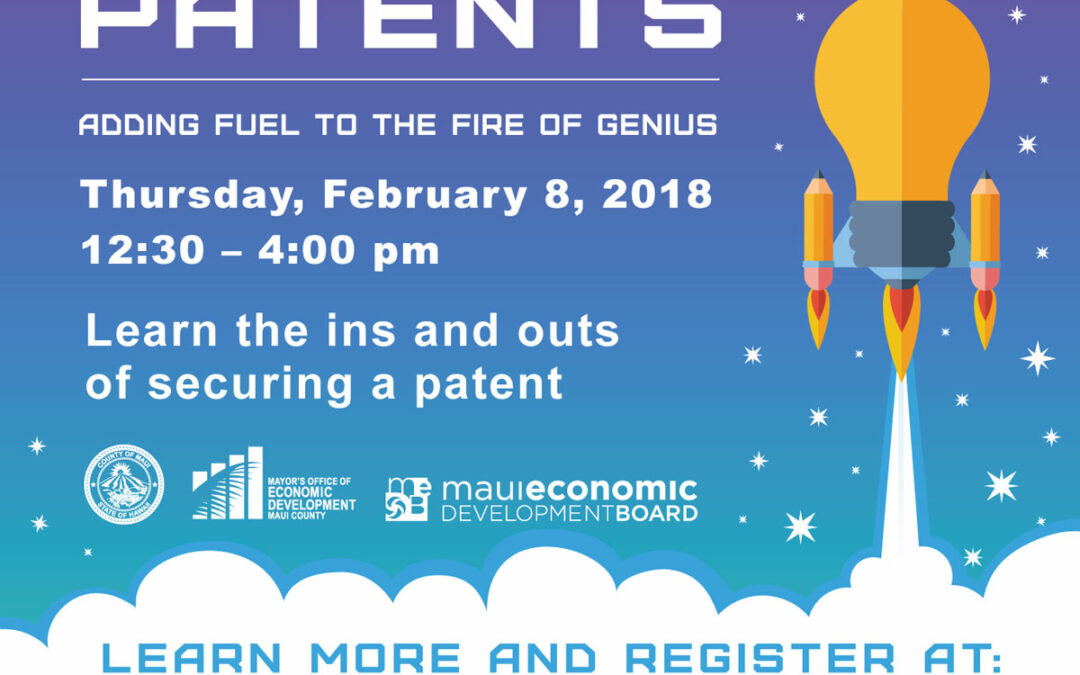
Jan 17, 2018 | Innovation
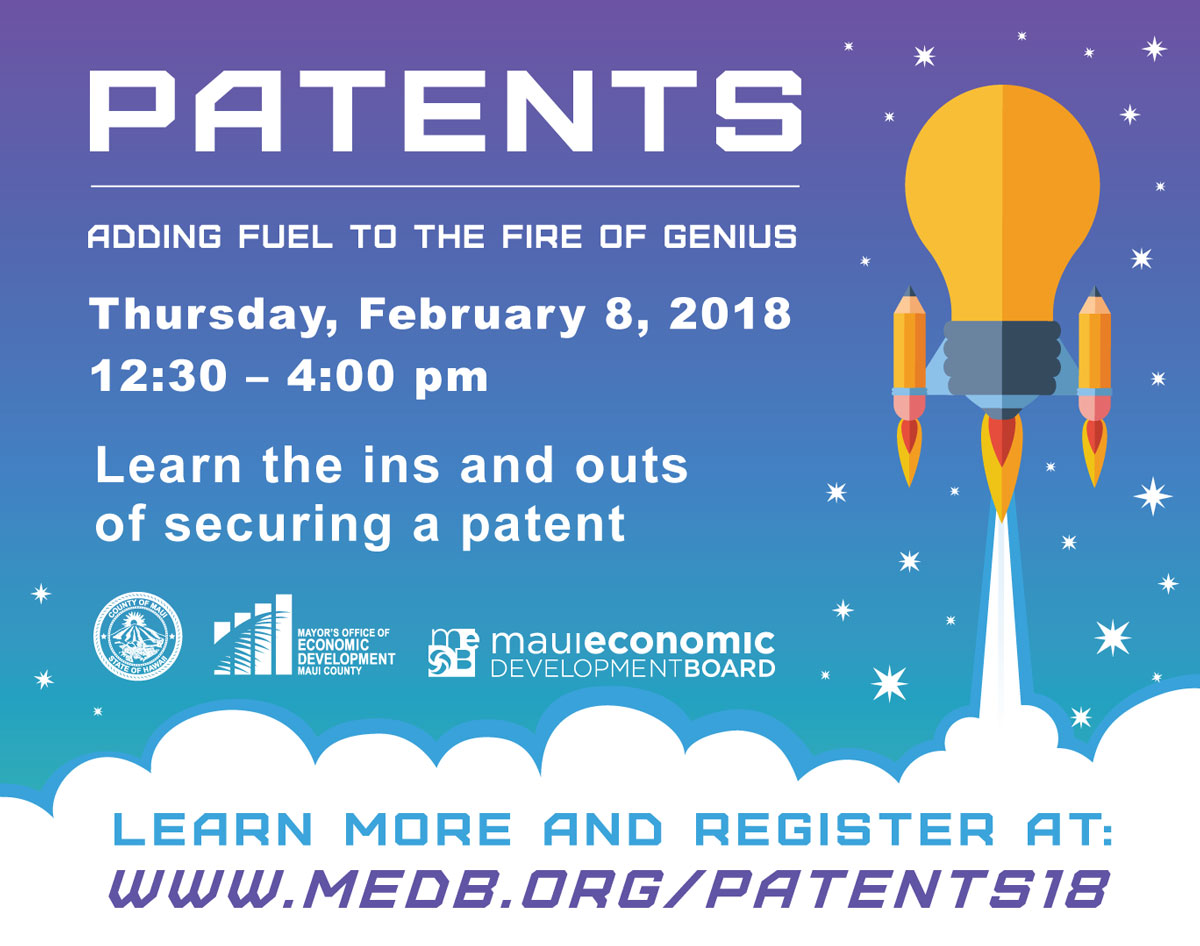
Don’t miss this opportunity to engage Palo Alto patent attorney, Dr. Victoria Brewster, in an informal round table discussion on the ins and outs of securing a patent. The seminar will cover patent basics, including putting early safeguards in place to protect rights to your innovations; applying for a patent; devising a patent strategy; and building a portfolio to help your startup reach and exceed its business objectives.
A sampling of the topics to be covered includes:
- What is a patent and what do I get with it
- How to prepare and apply for a patent (process, timeline, cost)
- What to expect during examination of a new patent application
- Best practices for developing a patent strategy
- Guidelines for building a portfolio
- Common pitfalls that may affect intellectual property rights
- And more!
Learn more and register at http://www.medb.org/patents18/
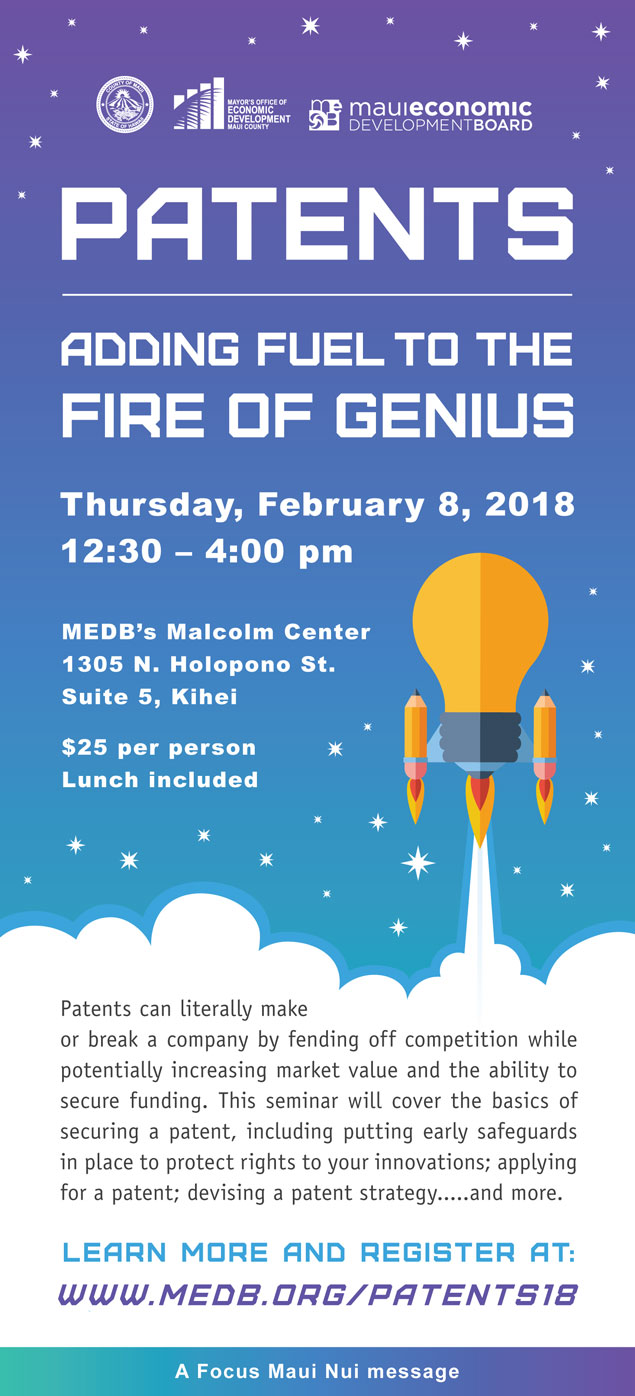

Oct 4, 2017 | Events, Innovation

The 18th Annual Advanced Maui Optical and Space Surveillance Technologies Conference (AMOS), held on September 19-22 at the Wailea Beach Resort-Marriott, brought together scientists, engineers and space experts from around the globe. Organized and presented by the Maui Economic Development Board (MEDB), the conference drew more than 700 participants from 16 countries for one of the top scientific gatherings in the field of Space Situational Awareness (SSA). With an exciting technical and plenary program and internationally known speakers, the conference looked at the future of SSA, including the nature of the market and balancing commercial innovation with national security and international relations. “The 2017 AMOS Conference served as a beacon to take AMOS into a new era,” said Leslie Wilkins, MEDB President and CEO. “It transformed it into the instrument required to lead the space community towards a more inclusive world.”
On the last day of the conference, MEDB hosted 160 Maui County middle school students in hands-on STEM (science, technology, engineering, and mathematics) activities during Student Space Exploration Day. “Each year we see students’ creativity blossom as they solve engineering problems in this fast-paced, high-energy atmosphere,” said Mapu Quitazol, MEDB Program Director. “The event provides our students the opportunity to learn about the different careers and technologies available in the space field. This year, we were especially excited to welcome former astronaut Dr. Janet Kavandi, Director of the NASA Glenn Research Center, who provided a first-hand discussion of living and working in space.”
“Today I learned about the many jobs an astronaut does in space” said Amelle Andrew, Lokelani Intermediate School 8th grader. “In the exhibit and poster session, I enjoyed learning about the huge telescopes on Haleakala that track satellites, and the importance of adaptive optics and imaging to track space debris.”
Lokelani STEM teacher Iokepa Meno exclaimed, “Once again MEDB has brought together scientists, students and the international space community to learn and celebrate everything about space. Mahalo MEDB and AMOS organizers for inviting our next generation of explorers to this amazing conference!”
I learned about the properties of light used to study space objects at the Boeing exhibit and enjoyed meeting all the exhibitors at AMOS.
Amelle Andrew, Lokelani Intermediate School 8th grader

Sep 13, 2017 | Education, Innovation

Gunther Hasinger, IfA Director
This past June the University of Hawaii’s (UH) Institute for Astronomy (IfA) celebrated its 50th anniversary with a three-day scientific conference on Oahu and a July open house event at its Maui facility in Pukalani. Although astronomy is one of the oldest sciences, new discoveries in the field are made almost daily. With nothing more than light collected by state-of-the-art telescopes, scientists can measure temperatures, compositions, velocities, and sizes. Combine this information with the laws of physics and chemistry, and it’s possible to study the powers of the Sun, find thousands of worlds around other stars, and even look back to the dawn of the Universe.
“Our top priority is ensuring that the IfA remains at the cutting edge of astronomy for decades to come,” said Gunther Hasinger, IfA Director. “We look forward to using the many new instruments and facilities that we will build and have access to in the next decades. On Haleakala, the Daniel K. Inouye Solar Telescope (DKIST), the largest of its kind in the world, will advance the frontiers of solar physics. The second Pan-STARRs telescope and the ATLAS telescope, paired with one on Mauna Loa, will improve the odds of finding asteroids and new objects on a collision course with the Earth. The PLANETS (Polarized Light from Atmospheres of Nearby Extra-Terrestrial Systems) telescope, by detecting light from exoplanets and outer atmospheres of planets, will search for life beyond the solar system.”
With these wonderful resources and an ongoing investment in world-class faculty, students, and educational and community programs, the IfA will be making discoveries that cannot even be imagined today. “We’re excited to reach the 50-year mark,” said Jeff Kuhn, IfA astronomer. “The IfA’s research programs started here on Maui with the Mees Solar Telescope in the early 60s. Now, as the IfA begins its second 50 years, we’re excited about the world’s largest coronagraphic telescope, the DKIST, beginning operations in 2020. It will bring new capabilities and understanding of the nearby Universe.”
MEDB congratulates the UH’s IfA on their 50th anniversary and looks forward to continuing our partnership to advance STEM outreach and education for Hawaii students.
Leslie Wilkins, MEDB President and CEO
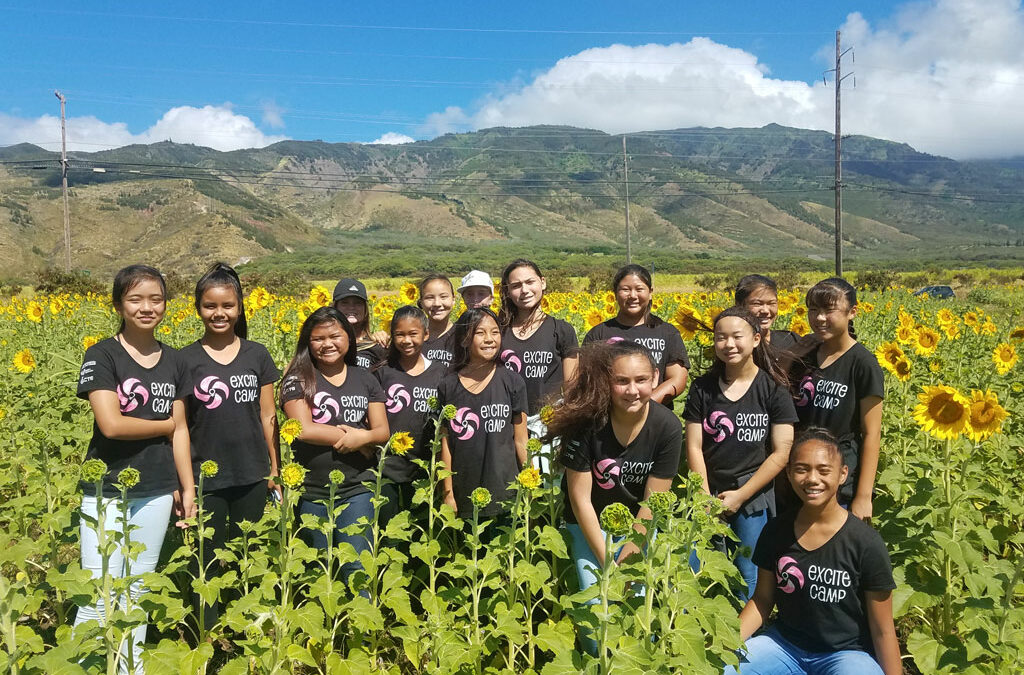
Aug 9, 2017 | Innovation, Stemworks
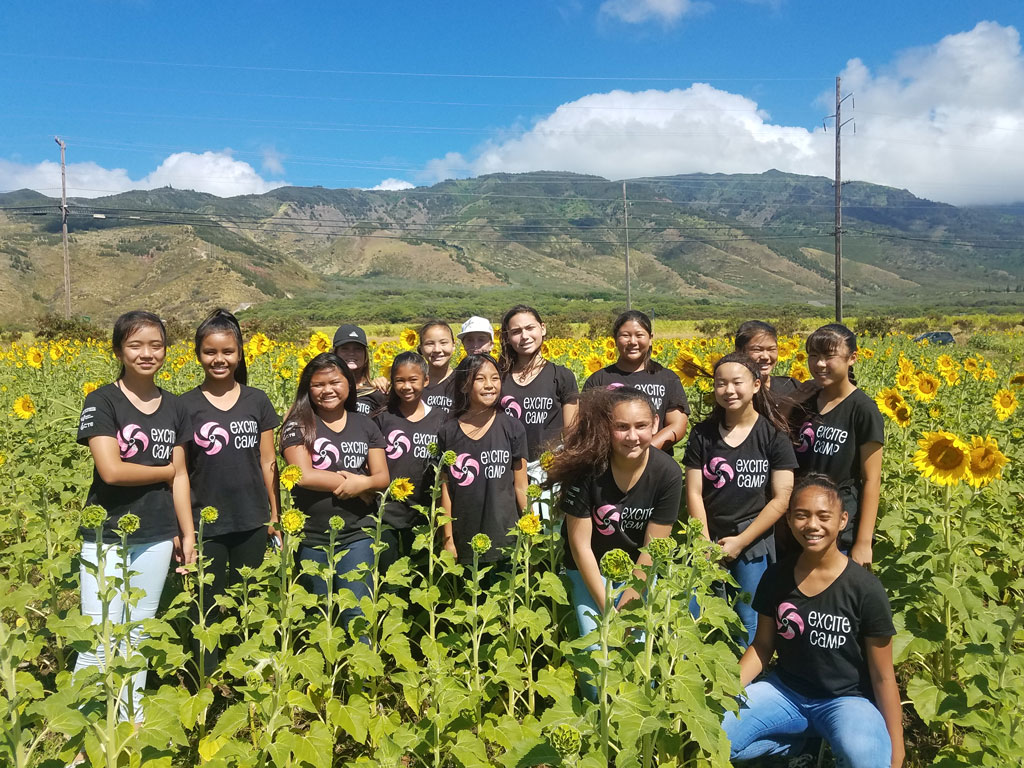
This summer, middle-school girls statewide had the opportunity to attend Excite Camp, a Women in Technology (WIT) program sponsored by the Maui Economic Development Board (MEDB). The mission of WIT is to encourage women and girls to pursue education and careers in STEM (science, technology, engineering and math) in the state of Hawaii. Excite Camp focuses on today’s most in-demand career fields, combining lectures, hands-on activities, geospatial technologies and on-site tours.
“The last 17 years, Excite Camp has been held on Maui and open to all Maui County middle-school girls,” said Mapu Quitazol, WIT Program Manager. “Three years ago we went statewide, hosting camps on Oahu, Hawaii Island and Molokai, and this year on Kauai. The camp builds confidence and motivates our young ladies with STEM activities, teaching them that they can do anything they set their hearts on. Each island has the same agenda but very different activities and cultural site visits. For example, on Maui we visited Pacific Biodiesel Technologies which produces fuel from sunflowers, Hawaii’s largest biofuel crop project.”
The camp attendance has been kept to 24-30 girls to create a small, intimate group. Each participant joins a group of four and is led by a female mentor. The mentor, who acts as a role model, explains the activities and works with students, helping them feel comfortable in their surroundings. “At the end of the four-day program the girls are no longer strangers, but colleagues and friends,” said Excite Camp mentor Dominie Miyasato. “In addition to getting excited about STEM, they learn the value of teamwork, communication and honoring their island heritage.”
Gracie May Gomes, Lokelani Intermediate School 7th grader, said, “Excite Camp offered so many hands-on activities that forced me to be creative and problem-solve by thinking outside the box. I was so inspired to invent and create new things.” Gomes’ mom, Annie, agreed. “I can’t thank MEDB enough! Excite Camp provided a wonderful opportunity for my daughter and the other girls by revealing the STEM career opportunities available to them right here in Hawaii.”
Excite Camp is successful due to our great community partners who are willing to share their knowledge, time, and resources to come and teach our girls fun, hands-on STEM experiments.
Mapu Quitazol, MEDB WIT Program Manager
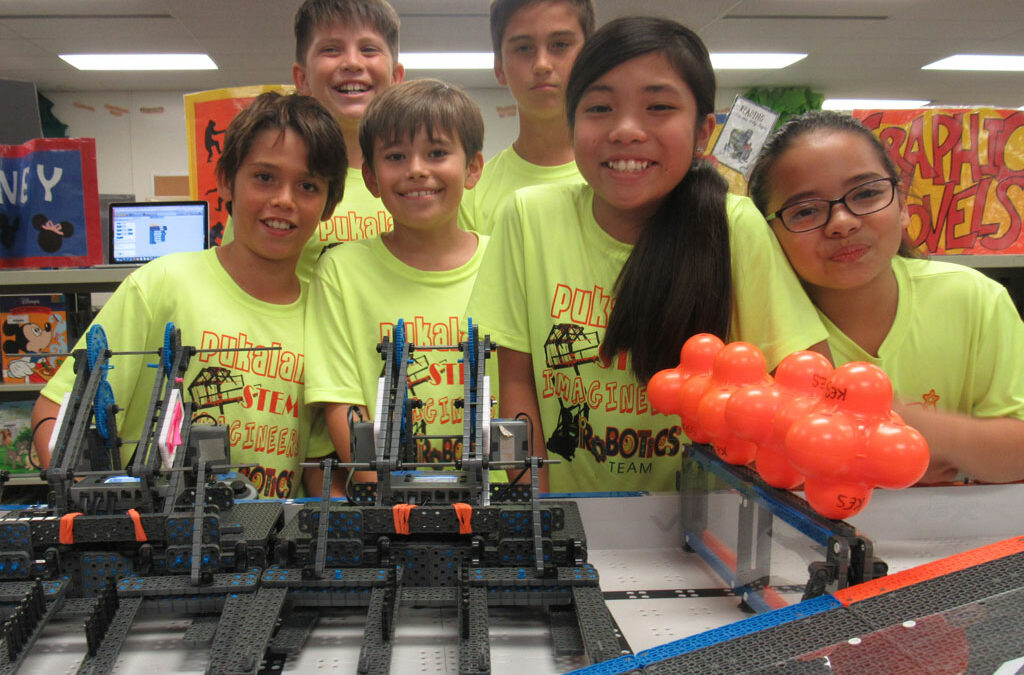
Feb 15, 2017 | Education, Innovation, Stemworks

The Maui League VEX IQ Robotics finals took place on Saturday January 28th at Lokelani Intermediate School in Kihei. The Teamwork Champion Award went to Pukalani Elementary School team 10704B and Maui Preparatory Academy team 10528B. Both teams, along with Pomaikai Elementary School, qualified for the State/Regional VEX IQ Challenge on February 20, 2017 at the Hawaii Convention Center in Honolulu. These Maui students continue to spend countless hours designing, building, programming and testing their robots with hopes of advancing to the 10th VEX Robotics World Championship on April 19-25, 2017 in Louisville, Kentucky.
The VEX IQ Challenge is played on a 4’x8’ rectangular field. Two robots compete in the Teamwork Challenge as an alliance in 60-second teamwork matches, working collaboratively to score points. Teams also compete in two additional challenges. The Robot Skills Challenge requires each robot to take the field under driver control. The Programming Skills Challenge requires each robot to score points without any driver inputs. The object of the game is to attain the highest score by accumulating Hexballs in their color-coded zones and goals and by parking and balancing robots on the bridge.
For over a decade, the MEDB Ke Alahele Education Fund of Maui Economic Development Board, fueled with the generous support from numerous community businesses and individuals, has been empowering Maui County students to compete in the VEX IQ Challenge and First® Robotics Competitions. “MEDB is thrilled to see the excitement of our Maui County students as they experience the Maui League competitions,” said Isla Young, WIT K-12 STEM Director. “As we continue to engage our students in STEM (science, technology, engineering, mathematics) education, robotics is one example that brings together critical thinking, teamwork, and research.”
“If it weren’t for MEDB, Pukalani Elementary School would not have this incredible Robotics program,” said Jasmine Domingo, Pukalani Robotics Coach. “Alongside their STEM education, the students are building leadership and problem-solving skills. I’m so proud of them!”
I love that there are always new things to learn at the competitions, such as how to improve programming of robots. Also, I enjoy working with my teammates and students from other schools.
Josie Vierra, Pukalani Elementary School 4th Grader
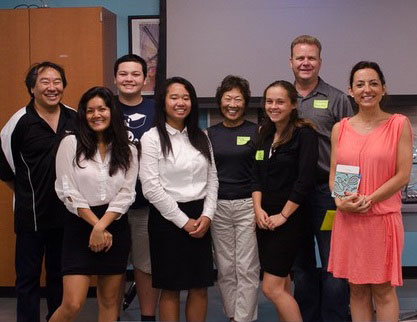
Jan 25, 2017 | Innovation
 The University of Hawaii (UH) Educational Outreach Team and Maui Economic Development Board have long shared common goals for STEM (science, technology, engineering, and mathematics) education. Recently, the UH-Manoa Physics Department hosted a group of four Maui High School students, Mary Chin, Princess Constantino, Laney Flanagan, and Bryce Jackman, at a Maui workshop to present their summer research findings on the effect of cosmic rays on the earth. With the help of their project mentor Dr. J. D. Armstrong, UH Institute for Astronomy (IfA), and their Maui High science teacher, Keith Imada, the students discussed possible correlations between galactic cosmic rays and solar activity to determine if a connection with global warming exists.
The University of Hawaii (UH) Educational Outreach Team and Maui Economic Development Board have long shared common goals for STEM (science, technology, engineering, and mathematics) education. Recently, the UH-Manoa Physics Department hosted a group of four Maui High School students, Mary Chin, Princess Constantino, Laney Flanagan, and Bryce Jackman, at a Maui workshop to present their summer research findings on the effect of cosmic rays on the earth. With the help of their project mentor Dr. J. D. Armstrong, UH Institute for Astronomy (IfA), and their Maui High science teacher, Keith Imada, the students discussed possible correlations between galactic cosmic rays and solar activity to determine if a connection with global warming exists.
“The abundance of galactic cosmic rays (GCR) hitting our atmosphere is heavily affected by solar activity and its 11-year cycle,” said Dr. Armstrong. “We studied about what cosmic rays are, how the solar activity changed during the last couple of centuries, where radiation comes from, and why radiation protection is necessary.”
The four students each gave a presentation on their research, all relating to climate change on earth. “I discussed how more galactic cosmic rays (GCRs) appear when sunspot numbers are lower, when there is less solar activity,” said Flanagan. “It was so interesting to learn the origin and composition of cosmic rays and solar modulation.” Jackman presented his research about how GCRs do not seem to affect climate change through low cloud coverage. “I learned about the different ways that the GCR flux is measured and about the sun’s 11-year cycle,” he said.
“I loved how we got to use actual data and work through the problems with professors,” said Chin, who investigated the relation among GCRs, the number of sunspots, and global temperatures. Finally, Constantino talked about the relationship between global warming and solar energy reaching the upper atmosphere. The students will also submit their project findings to the 2016 Pacific Science Symposium.
The UH Physics professors gave talks and shared activities using data from an instrument mounted on the International Space Station to teach how protection from galactic cosmic rays is necessary for any NASA Mars mission.
Dr. J. D. Armstrong, Institute for Astronomy Educational Outreach
















